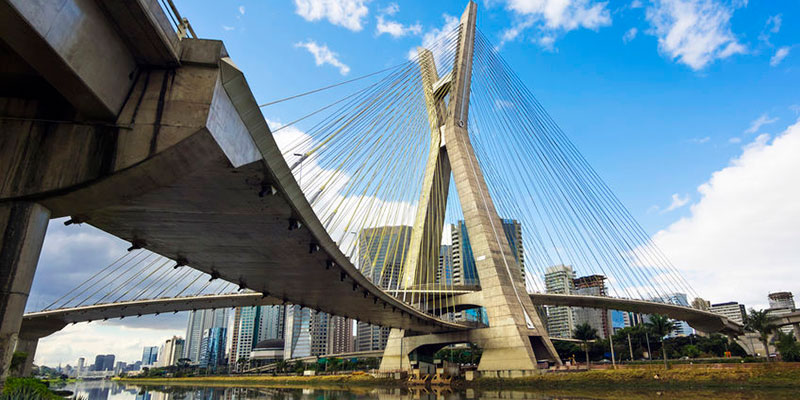Brazil exists in a state of water inequality. The sparsely populated North is water-rich, but big cities in the South — like São Paulo — are facing water crises.
With traditional approaches not working, the region is ripe for change as it strives to meet sustainability goals
Across the region, today’s Latin America is experiencing water and sanitation problems. Although the region is highly urbanized, half of Latin America’s residents still are not connected to a sewage system. Nearly a quarter have no piped water access from an acceptable water system. And although about 26% of people in Latin America have some form of sanitation, like septic tanks or latrines, wastewater treatment plants serve only about 15% of wastewater produced, and even then, treatment quality often is woefully inadequate.
But innovative forces are working hard to meet United Nations’ 2030 Sustainable Development Goal 6 (UN SDG 6) before the deadline. Pablo José Bereciartua, an engineer, academic, and former Argentinian Secretary of Infrastructure and Water Policy, recently discussed how the foundations of new technologies and new business models can disrupt traditional approaches in the quest to meet SDG 6.
Enticing questions can be asked about water supply and sanitation. How can new technologies, such as big data and algorithms, or renewable energies, be used to improve efficiency? How can new paradigms such as the circular economy or digital water be implemented? And how can new business models be designed to address these challenges with fresh approaches and, at the same time, attract public and private investments?
Challenges Across the Region
The challenges and business models for water management are different for each Latin American nation. The International Water Association’s Source magazine recently presented a roundup of progress in water issues:
- In Argentina, there are 24 independent water and sanitation jurisdictions. Without a federal body mandating a common course, progress on unifying policy decisions toward meeting SDGs has been slow. In Buenos Aires, however, service tariffs were raised to increase new meter installations from 1,000 per year to more than 150,000 per year, and $500 million was thereby raised to expand coverage to unserved areas of the city and its surrounding communities.
- Brazil exists in a state of water inequality. The sparsely populated North is water-rich, but big cities in the South are facing water crises. One aspect of Brazilian water inequality is that heavily populated areas have nearly 90% sewage treatment coverage, compared to only 20% in the North. Congressional discussions are underway on universalizing sanitation services, and the Federal District’s Adasa agency is exploring innovative mechanisms for regulatory governance and reaching out to share experience and technology with other Latin American and Caribbean (LAC) countries. Sabesp, a Brazilian water and waste management company owned by São Paulo state, has been demonstrating a profitable business model, serving 20 million residents and trading on both Brazilian and New York stock exchanges.
- In Colombia, Empresas Publicas de Medellin, a publicly owned public service utility, has been a profitable publicly owned business model that has set its sights on universal service, including the underserved.
- In Chile, one success story is a private concession in Santiago that achieved universal coverage with excellent operational and environmental standards.
- In Peru, drinking water and sanitation is unbalanced between urban, peri-urban, and rural regions. Water governance for the 7 million inhabitants is also fragmented among 50 utilities in the cities and almost 25,000 administrative boards in the countryside, but the SUNASS regulatory body is working to group providers together to leverage economies of scale unavailable to lone small providers. In some regions, the scheme is working, with fees for sanitation and ecosystem protection incorporated in the water price, allowing both a clean environment and more sanitary living.
- In Mexico, the big issue is the water sector’s financial sustainability after the imposition of 60% energy tariff increases, but the country is working on a legal mechanism, a General Water Law, to regulate the sector toward meeting UN SDG 6.
Water and Sanitation Technological Innovations
Although new business models are arising in Latin America, new paradigms and technologies are not as quick to take root. But the World Bank has sought to promote the innovative paradigm of the circular economy in the region with its “Wastewater: from waste to resource” initiative to move from wastewater treatment to resource recovery. And this year, more than 30 desalination projects have begun, with more than $25 billion in desalination investment in Latin America planned.
Contact Fluence to learn more about the latest in wastewater and desalination technology — packaged and financed for any Latin American terrain — as part of our ongoing commitment to the UN SDGs.

